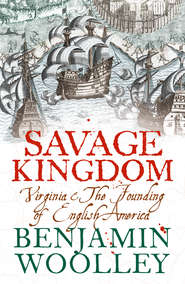По всем вопросам обращайтесь на: info@litportal.ru
(©) 2003-2024.
✖
The Queen’s Conjuror: The Life and Magic of Dr. Dee
Настройки чтения
Размер шрифта
Высота строк
Поля
(#litres_trial_promo) They believed that members could show allegiance to any prevailing religious doctrine in order to promote the movement’s aims of developing an all-embracing theology. This reflected Dee’s own view, and it is likely he knew of and was sympathetic to the sect.
(#litres_trial_promo)
During the winter of 1563, Dee heard rumours that a copy of one of the most precious manuscripts in circulation, for which scholars from all over Europe had been searching for over sixty years, had turned up in Antwerp. It was called Steganographia, and had been written by Johannes Trithemius.
Trithemius was one of the founders of modern cryptography. He wrote the first published work on the subject, Polygraphia, which appeared in 1518. Born in 1462, he took his name from Trittenheim, a town on the left bank of the Moselle in Germany. He claimed to be unable to read until he was fifteen. At that age he had a dream in which he was presented with two tablets, one inscribed with writing, the other with pictures. Told to choose between them, he picked the tablet with writing because of his ‘longing for knowledge of Scripture’.
(#litres_trial_promo)
He later joined the Benedictine abbey of Sponheim, which was then ‘poor, undisciplined, ruinous, and virtually without furniture’. In July 1483, he was appointed abbot, and embarked on a complete renovation of the place, transforming it into a centre of learning. He built a lodge for visiting scholars, decorating the walls with classical and contemporary prose and poetry. He also rebuilt the library, increasing it from just forty-eight books to two thousand.
Trithemius’s book-collecting drew him towards the study of the Cabala, and his work became a strong influence for many of the great mystic scholars of the early sixteenth century, notably Henry Cornelius Agrippa of Nettesheim, who was his pupil. Agrippa was the leading writer on mysticism and magic of the Renaissance. His shadow ‘made all Europe honour him’, Marlowe wrote in Dr Faustus.
As with Dee, Trithemius’s interest in such subjects led to his being accused of ‘trafficking’ with demons. It was even said he conjured up the bride of Maximilian I soon after her death so the Emperor could see her once more. As Trithemius kept his work increasingly secret, so these accusations became ever more insistent and threatening.
Dee knew of the accusations against Trithemius, placing him alongside Socrates and Pico della Mirandola (pioneer of a Christian form of the Cabala) as a victim of intolerance. Like Dee, Trithemius drew a sharp division between magic and superstition. Magic was about knowledge, the study of the hidden forces – spiritual as well as physical – that rule nature. Superstition exploited ignorance. Thus Trithemius called for witches and wizards to be rooted out, and attacked the sort of fortune-telling which was practised by Dee’s contemporaries like Nostradamus as ‘empty and foolish’.
Trithemius summed up his career: ‘I always wanted to know what was knowable in the world…But it was not within my power to satisfy the desire as I wished.’ This was a sentiment Dee would one day echo. But for the moment, with his growing library, knowledge of languages and science, his influence at court and friendships with Europe’s leading intellectuals, Dee seemed at the threshold of complete success. And now he had a copy of Steganographia within his grasp.
Trithemius had started work on the book between 1499 and 1500. He sent a letter to his friend Arnold Bostius, a Carmelite monk in Ghent, in which he boasted that once finished it would be a ‘great work… that, if it should ever be published (which God forbid), the whole world will wonder at’. He promised that it would contain a host of hidden writing systems, a way of transmitting messages over great distances using fire, a method of teaching Latin in two hours and a form of communication that can be achieved while eating, sitting or walking without speech, facial expressions or signs. Unfortunately Bostius died before the letter arrived and it was read with horror by his brother Carmelites, who circulated it in an attempt to discredit Trithemius.
A further setback came when Trithemius was visited by an officious dignitary called Carolus Bovillus in 1500. Bovillus later reported that ‘I hoped that I would enjoy a pleasing visit with a philosopher; but I discovered him to be a magician.’ It was his perusal of the Steganographia, in particular its lists of the ‘barbarous and strange names of spirits’ in languages he did not recognise, that convinced him of this.
(#litres_trial_promo)
Trithemius then abandoned the work, dying in 1516. But the Steganographia lived on, thanks to its advance publicity: manuscript copies of three of the four books mentioned by Bovillus were thought to have survived. They soon acquired mythical status and became as sought after as Aristotle’s lost dialogues.
Dee was intensely excited when he heard of the existence of a copy of the manuscript in Antwerp. Getting his hands on it proved difficult. It involved spending all his travelling money, some twenty pounds, and working through an intermediary, a mysterious ‘nobleman of Hungary’, who in return demanded that Dee ‘pleasure him…with such points of science as… he requireth’.
(#litres_trial_promo) Even then, he was only allowed to keep the manuscript for ten days.
Tucked away in his lodgings at the sign of the Golden Angel, he began transcribing the work. It was a difficult task. Ignoring any problems of legibility, the manuscript was a difficult one to copy. It was filled with tables of numbers and endless lists of nearly identical and apparently meaningless names. Dee had to work round the clock to get the job done in time.
On 16 February 1563, he forced his tired fingers to pen one more document: a letter to William Cecil, Queen Elizabeth’s key minister, reporting the discovery of this, ‘the most precious jewel that I have yet of other men’s travails recovered’, and begging for some recompense for his costs, which had left him virtually penniless.
(#litres_trial_promo) This discovery demonstrated why Elizabeth’s regime needed someone with his contacts and understanding scouring the Continent for new texts and ideas, and why it was worth paying him to allow him to continue.
When Dee wrote his letter, he knew that it was about to embark on a long and perilous journey that could last a few days or several weeks with no means of knowing when or even if it would reach its destination.
As every sixteenth-century prince and general knew, distance was the first enemy. Roads were often impassable, ‘noisome sloughs’, ‘so gulled with the fall of water that passengers cannot pass’.
(#litres_trial_promo) Despite such barriers and discomforts, despite the enormous cost, Tudor nobles, scholars and merchants were determined to travel. There was constant traffic of people and goods across Europe and as a result growing interdependence between regions. A system that promised instant communications over unlimited distances was of obvious importance, and that was one of many innovations that Trithemius had boasted to Bostius the Steganographia contained. When Dee finally managed to read the manuscript for himself, he found that Trithemius was apparently equal to his word. The Steganographia was divided into three books, the last incomplete and of a rather different nature to the first two. Books I and II describe an enormously elaborate system for sending messages between two people using incantations.
Trithemius gave several examples of how the system would work. For instance, the sender of a message first writes it out, using any language he chooses, after a preamble of paternosters and other supplications. He then speaks a special formula to summon one of the many spirits identified by Trithemius, say, Padiel:
Padiel aporsy mesarpon omeuas peludyn malpreaxo. Condusen, vlearo thersephi bayl merphon, paroys gebuly mailthomyon ilthear tamarson acrimy Ion peatha Casmy Chertiel, medony reabdo, lasonti iaciel mal arti bulomeon abry pathulmon theoma pathormyn.
(#litres_trial_promo)
Padiel should then appear, whereupon the sender hands over the message. The spirit takes it to the recipient, who must speak another incantation, and the meaning of the message becomes clear.
To complicate matters further, the sender must learn the ‘places, names, and signs of the principal spirits, lest through ignorance one calls from the north a spirit dwelling in the south; which would not only hinder the purpose but might also injure the operator’.
(#litres_trial_promo) There are hundreds of thousands of spirits – some of which appear in the day, others of which prefer the dark of the night, some subordinate to others – each with its own sign. Books I and II list many of them, giving details of their powers and peculiarities and the conjurations needed to call them.
Book III, which is incomplete, is very different. It begins by promising even greater feats of communication than the first two, which are based on the discoveries of an ancient (apparently fictional) philosopher called Menastor. In the tradition of occult knowledge, the findings have been, Trithemius warns, presented in a way so that ‘to men of learning and men deeply engaged in the study of magic, it might, by the Grace of God, be in some degree intelligible’ but not to ‘thick-skinned turnip-eaters’.
(#litres_trial_promo)
Instead of endless epistles, Book III is filled with tables. They are messily laid out, except for the one which appears in the book’s preface. This assigns numerical values for twenty-one spirits, each of which is associated with one of the seven planets. There will, Trithemius promises, be seven chapters in the following book, one for each planet. Chapter 1, which is the only one to survive, duly follows with a description of how to call on the help of Saturn to communicate with a fellow adept. It is accompanied by a series of numerical tables which are apparently to be used to perform astronomical calculations.
It would be another forty years before the manuscript that Dee now had in his possession was published. It appeared in Frankfurt in 1606, together with a shorter work called the Clavis (or ‘key’) to the Steganographia. It was the Clavis that revealed Trithemius’s true purpose. The apparently nonsensical spiritual incantations of the first two books turned out to be coded messages. For example, in the case of the call for Padiel:
Padiel aporsy mesarpon omeuas peludyn malpreaxo
the message, or ‘plain text’ as cryptographers now call it, was encoded in alternate letters of alternate words:
padiel aPoRsY mesarpon oMeUaS peludyn mAlPrEaXo
which yields the words ‘Primus apex’ (the first summit). The Clavis thus showed that Books I and II of the Steganographia were not really about magic. They were full of sample ciphers. However, the Clavis did not include a key for Book III. Did this mean it was really a work of magic or a code book too? The question remained unresolved for centuries. Gustavus Selenus (the pseudonym of Duke August II of Brunswick-Lüneburg) reprinted Book III in his definitive 1624 study Cryptomenytices et Cryptographiae, establishing Trithemius’s position as a founding father of modern cryptography, but offered no solution. W. E. Heidel claimed to have cracked the code in 1676, but published his results in the form of a series of equally indecipherable cryptograms, thereby managing merely to add to the mystery.
By the late twentieth century, most scholars seem to have given up, and had consigned the work to the occult.
(#litres_trial_promo) Then, in the late 1990s, two people settled the matter once and for all, one in 1993, the other in 1996. The first to succeed was a German linguist called Thomas Ernst.
(#litres_trial_promo) The second, who had no idea of Ernst’s success until he had published his own paper, was Jim Reeds, working in the Mathematics and Cryptography Research Department at AT&T. Reeds’s diligent efforts at analysing this and other mysterious texts associated with Dee have proved extraordinarily successful.
Ernst and Reeds discovered that the third book of the Steganographia did indeed contain a code. There were hints as to how it might work in the tables and the text. For example, Reeds noticed that the first column of the table in the preface contained multiples of twenty-five. What was the significance of this number? There was also a passage in the first chapter that seemed suggestive:
If you wish to operate in Steganography… you must first of all acquaint yourself with [Saturn’s] various and diverse motions; and first the various motions, pure, proper, mixed, direct, retrograde and perplexed.
With a combination of skill and guesswork, Reeds worked out that the numbers in the tables represented letters of an alphabet, with each letter being a number added to a multiple of twenty-five. Lengthy analysis revealed the alphabet to comprise twenty-two of the Roman characters (A to Z minus J, K and W), supplemented by three other symbols. It was also in reverse order, which was perhaps what Trithemius was hinting at in his reference to the ‘retrograde’ motions of Saturn.
Reeds tested the key by trying it out on various sections of the book. For example, a series of numbers in the first table spelt out ‘Ioannes’, the Latin form of John, Trithemius’s first name. A selection of words in one of the tables in chapter 1 contained German words which translate into the phrase ‘the bringer of this letter is a bad rogue and a thief’. Reeds found another puzzling phrase, this one in Latin. It was repeated several times: ‘Gaza frequens Libycos duxit Carthago triumphos’. It turns out to be a pangram, a phrase that contains all the letters of the alphabet (like ‘the quick brown fox jumps over the lazy dog’).
(#litres_trial_promo) Presumably these phrases were chosen to demonstrate the capabilities of the cipher.
Having broken the code, the tables yielded up the secrets they had hoarded for five hundred years. Unfortunately these proved uninformative: besides one or two gnomic phrases, the remainder of the plain text seemed unintelligible. This may be because the plain text is itself encoded in some further way, or because the tables became corrupted over years of underground circulation in manuscript form. Nevertheless, the discovery of the true purpose of Book III of the Steganographia was a breakthrough, because it proved for the first time that it was primarily a work of cryptography, not magic.
But whether Dee realised that the Steganographia was a code book remains unclear. He may not have seen the Clavis, the key to Books I and II. So, when he so excitedly commended the work to William Cecil as ‘meeter’ (more suitable or useful) and ‘more behoveful’ (more beneficial) to ‘your honor or a Prince’ (Queen Elizabeth) than any other, what did he mean? Spiritual communication is a possibility – but unlikely. Cecil was both very practical and conservative, and, though he undoubtedly accepted the existence of spirits, was unlikely to have been persuaded to practise the elaborate rituals Trithemius described.
(#litres_trial_promo)
Dee was fascinated by, and evidently expert in, cryptography. He owned several copies of Trithemius’s Polygraphia, which was explicitly about codes, and studied other key texts on the subject, notably Jacques Gohorry’s De Usu et Mysteriis Notarum and Jacopo Silvestri’s Opus Novum, the latter of which Dee used to practise writing in cipher for himself.
(#litres_trial_promo) Thus, when he promised Cecil that the book would advance the ‘secret sciences’, he was not necessarily referring to the occult. When Dee sent his letter, Cecil was just beginning to put in place the espionage network which, under Francis Walsingham, his successor as spymaster, would become one of the most formidable and effective in Europe. This network came to rely heavily on codes.
(#litres_trial_promo)







